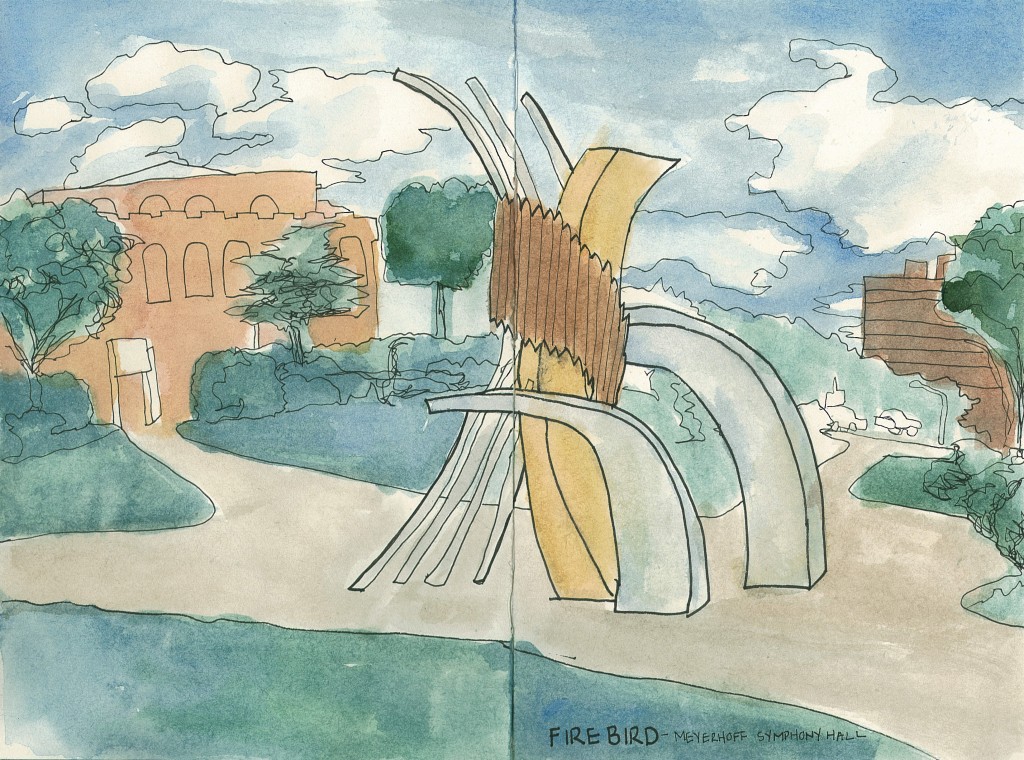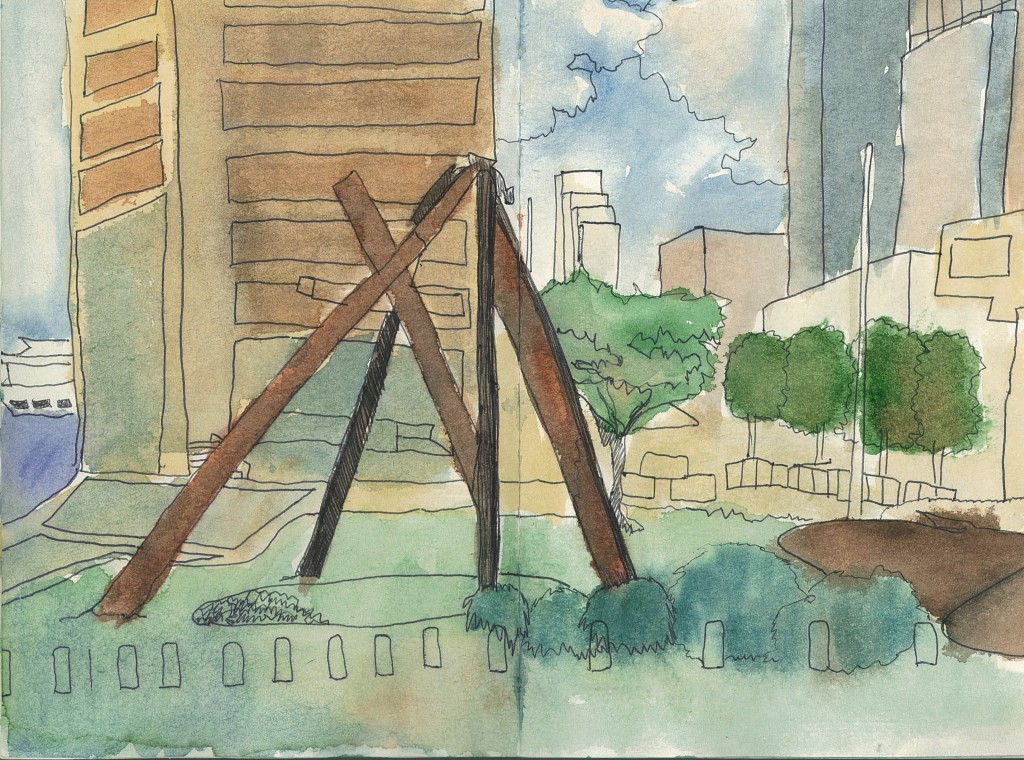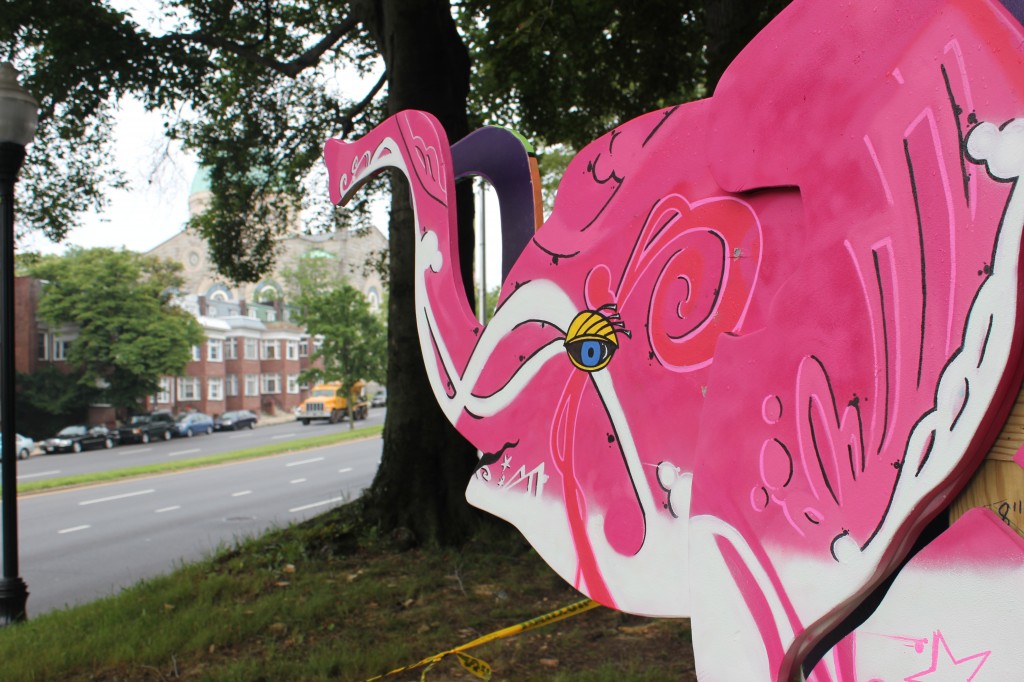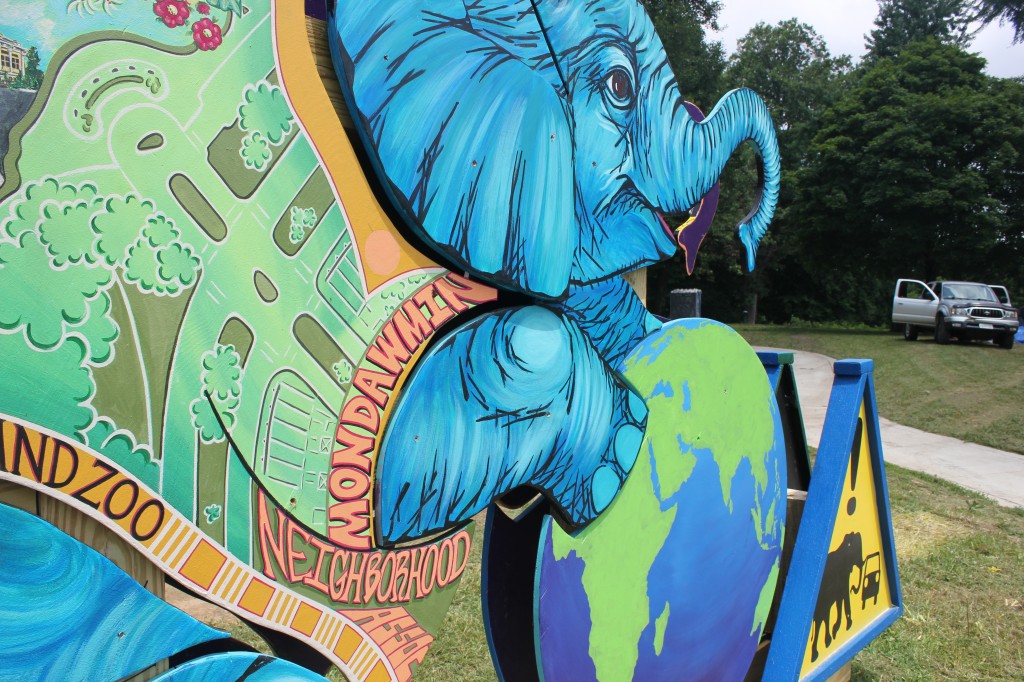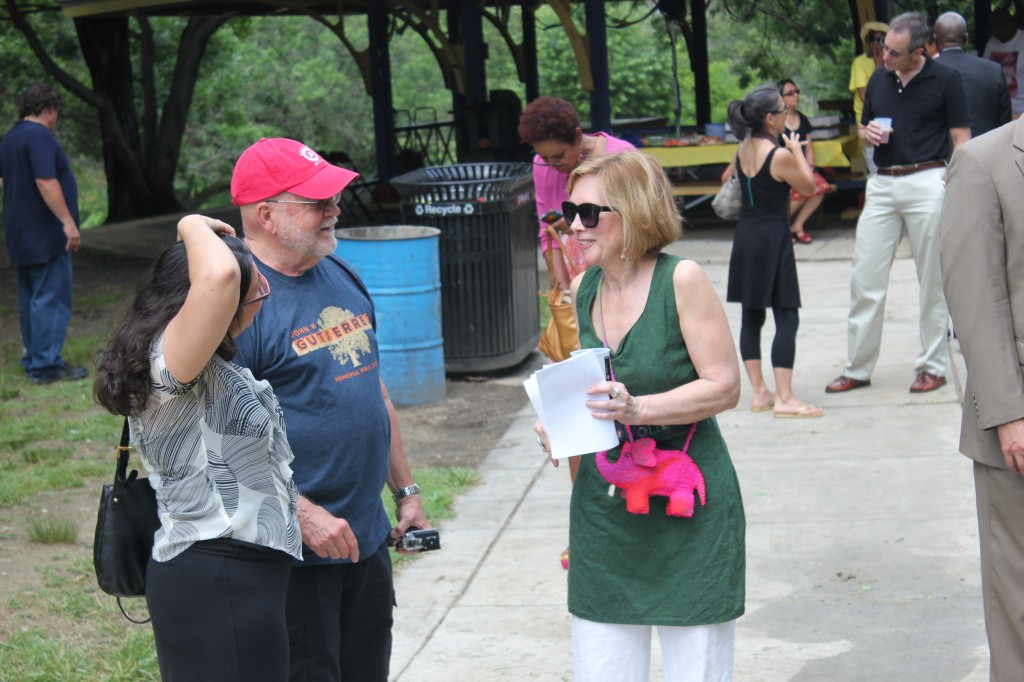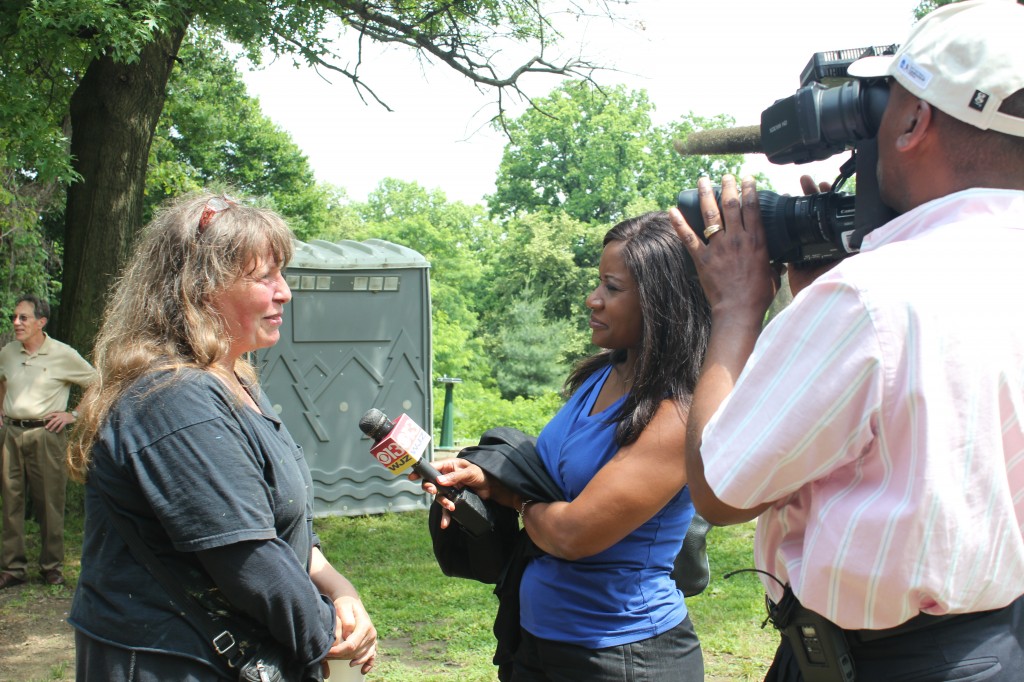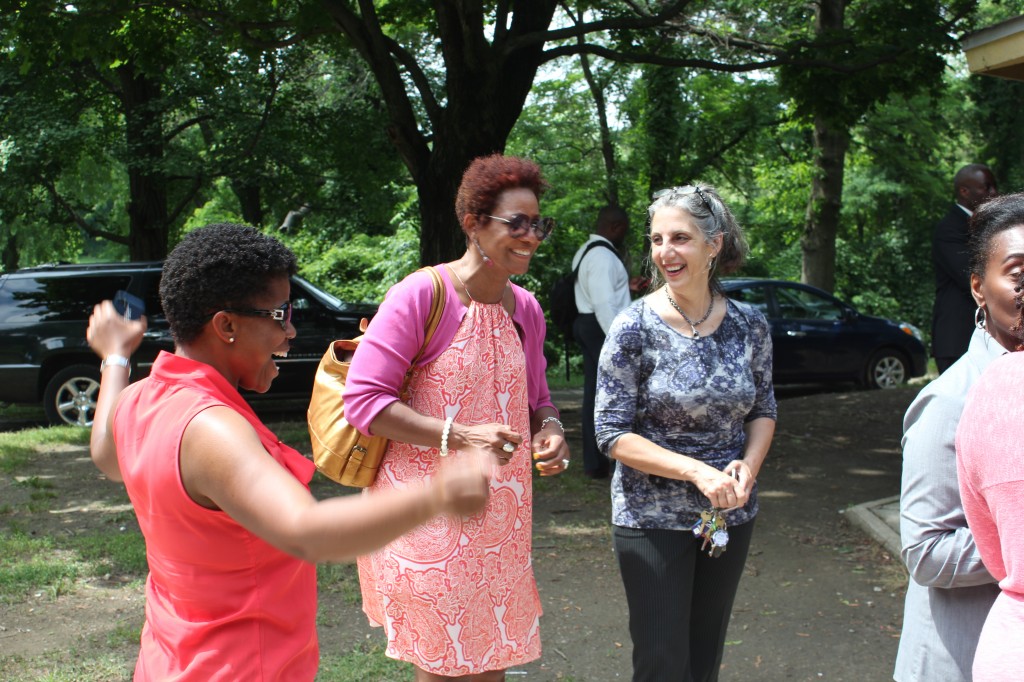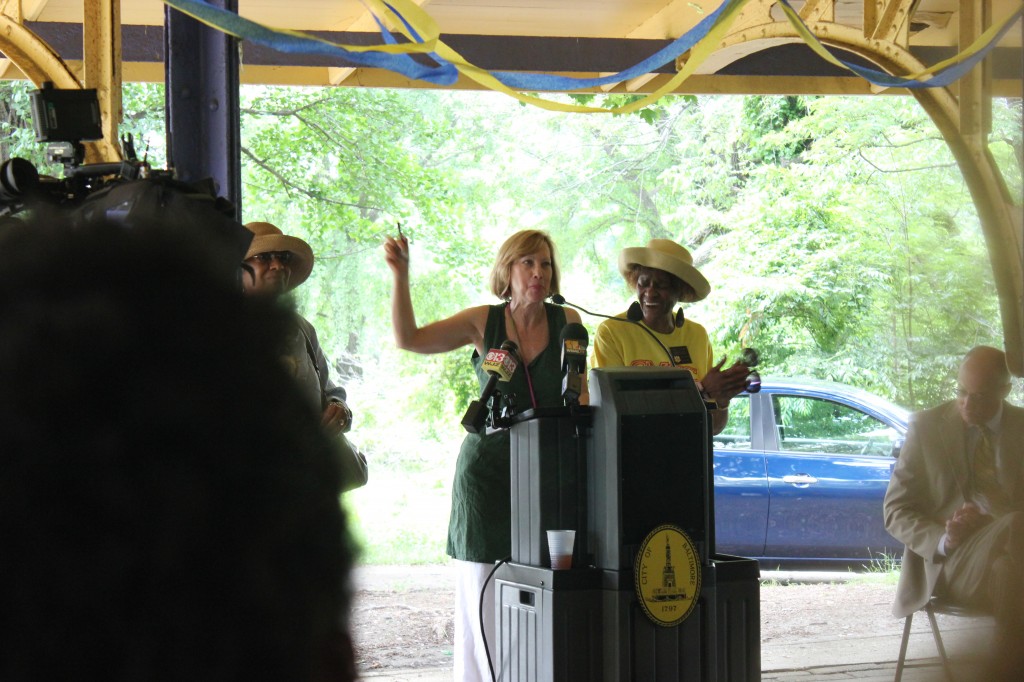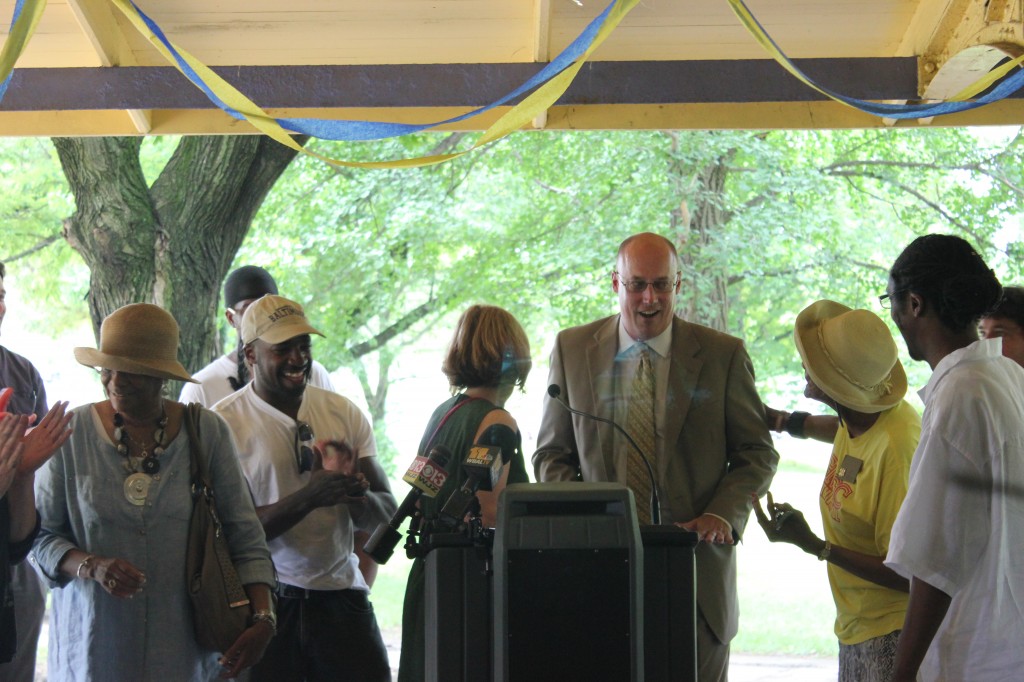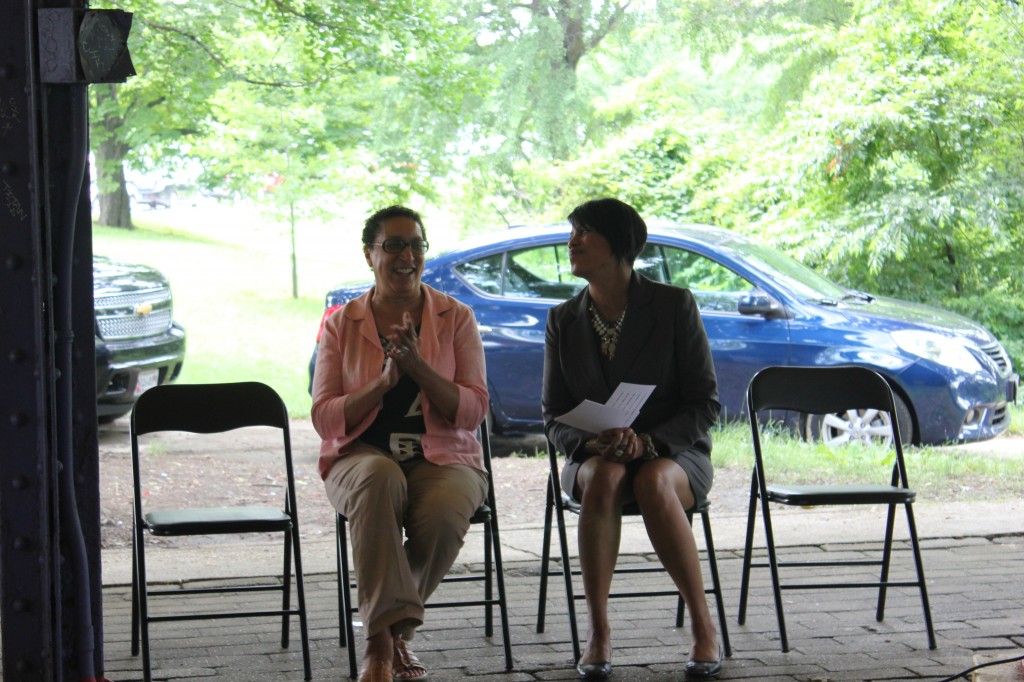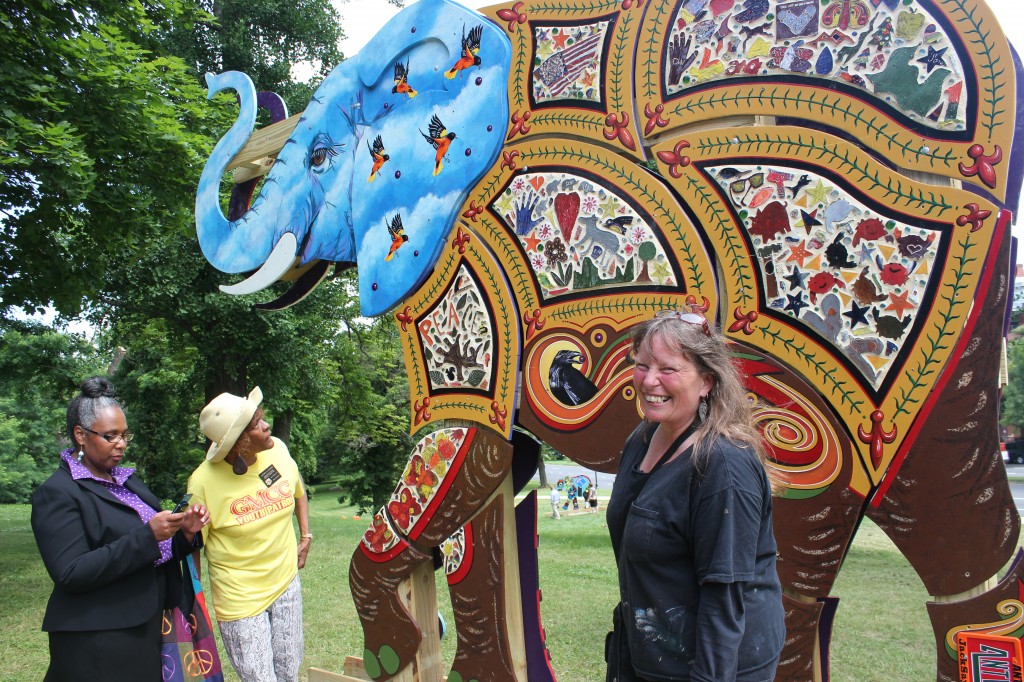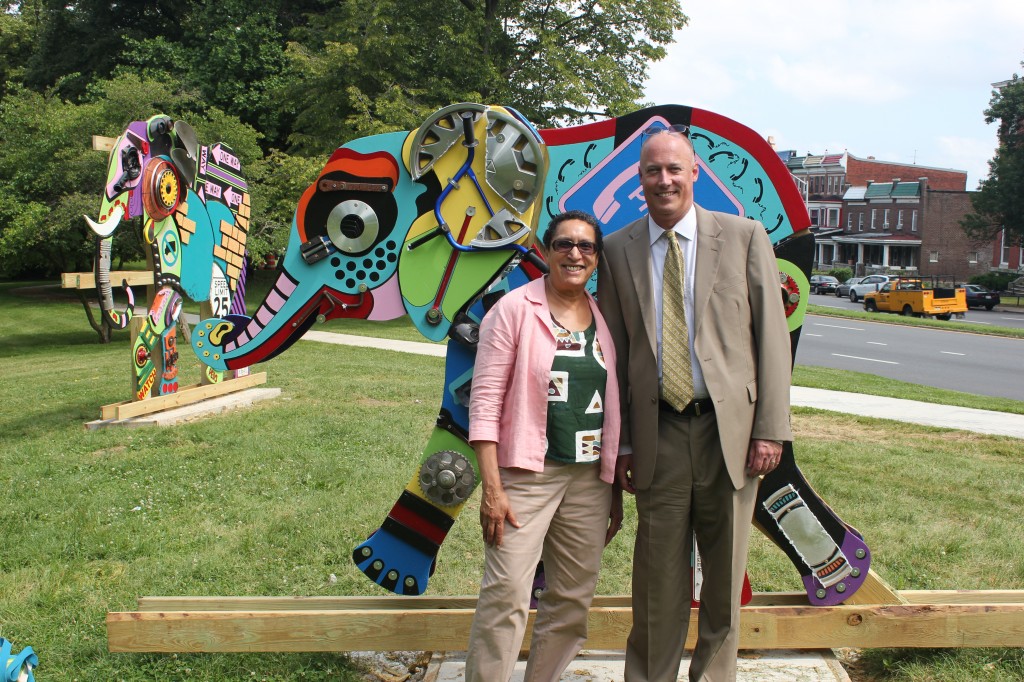Firebird is a 50-foot-tall metal sculpture by Baltimore artist Rodney Carroll that is installed on a plaza at the southeast corner of Howard Street and Park Avenue, opposite the entrance to the Joseph Meyerhoff Symphony Hall.
It was inspired, Carroll says, by The Firebird, a 1910 ballet by Russian composer Igor Stravinsky that is based on a Russian folk tale featuring a handsome prince, a lovely princess, and the magical intervention of the firebird.
The $275,000 sculpture was commissioned by David S. Brown Enterprises, one of the developers of the Symphony Center office and apartment complex next to the hall, and the Maryland Mass Transit Administration, which operates the light-rail line that runs through the area.
Carroll, a graduate of the Rinehart School of Sculpture at the Maryland Institute College of Art, was chosen in a 2000 competition. He said he was striving to create a work that will be a gateway to the cultural district and a symbol for the symphony, whose home turns 32 later this year.
“I wanted to play off the architecture of the symphony hall, the curvilinear aspect,” he said. “I wanted to reach out from that and imply music spilling out of the symphony hall to the populace.”
One of Stravinsky’s best known compositions, The Firebird, was first performed by the Ballets Russes at the Paris Opera. It is characterized by outbursts of great force and propulsion, followed by lighter, more shimmering passages.
Carroll used stainless steel, bronze and copper to create a composition that echoes Stravinsky’s music, with powerful, buttresslike elements and more delicate pieces. Elements of the artistic composition also suggest parts of musical instruments, such as the pipes of an organ or the strings of a harp.
Noting that Stravinsky collaborated at one point with Russian painter Wassily Kadinsky, Carroll said he considers the Baltimore sculpture another sort of collaboration, this time in three dimensions.
“Since the sculpture stands alone in a large plaza, I felt the need for the work to be architectural in scale and elements,” he said. “The main element is structured with twisting buttresses, and pedestrians may walk into and through the sculpture. … It’s different from each side, and it’s meant to be that way.”
To see more of Carroll’s work, visit his website at www.rodneycarroll.com
Want to know more about Baltimore Public Art? Pick up the book
Outdoor Sculpture in Baltimore: A Historical Guide to Public Art in the Monumental City by Cindy Kelly.
Parts of this post referenced The Baltimore Sun’s 2004 article “Giving form to ‘Firebird'” by Edward Gunts. The original piece can be viewed here.


